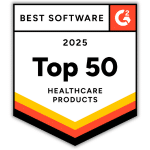
As the healthcare industry grows and changes, compliance with regulations and standards is paramount. Healthcare organizations face numerous challenges in navigating complex regulatory frameworks while ensuring patient safety, data privacy, and maintaining the trust of stakeholders. To mitigate compliance risks effectively, healthcare providers have turned to a valuable tool, the healthcare compliance risk assessment matrix. We will look into why healthcare risk assessment questionnaires are important and how templates help.
Understanding the Healthcare Compliance Risk Assessment Matrix
A healthcare compliance risk assessment matrix is a structured framework that helps organizations effectively assess and manage compliance risks. It provides a systematic approach for evaluating various aspects of healthcare operations, identifying potential vulnerabilities, and prioritizing actions based on risk levels.
Using a questionnaire-based methodology, the matrix collects data related to compliance risks across different departments within an organization. These healthcare compliance risk assessment questionnaires are designed specifically for healthcare settings, addressing key areas such as:
- Patient Privacy
- Data Security
- Billing Accuracy
- Ethical Standards
- Regulatory Adherence
Why is a Healthcare Compliance Risk Assessment Matrix Necessary?
Using a healthcare compliance risk assessment matrix is helpful for several reasons, helping you identify and manage risks.
1. Identifying Risks
With countless healthcare industry regulations, it can be challenging for organizations to keep up with changing requirements. The risk assessment matrix serves as a valuable tool to identify potential gaps in compliance efforts. Organizations gain valuable insights into areas where improvements or adjustments may be needed by evaluating each area of operation, from clinical practices to administrative processes.
2. Prioritizing Actions
Not all risks carry the same level of severity or impact on an organization’s compliance status. The matrix helps prioritize actions by assigning risk levels based on likelihood and consequences. This enables organizations to address high-risk areas promptly while allocating appropriate attention to lower-risk aspects.
3. Streamlining Processes
By using a standardized questionnaire format, the matrix allows for consistent evaluation across different departments within an organization. This streamlines the risk assessment process and ensures crucial areas are noticed and addressed during evaluations.
4. Creating Accountability
The matrix enables organizations to assign responsibility for risk mitigation actions. By clearly documenting identified risks and the corresponding action plans, holding individuals or departments accountable for their compliance efforts becomes easier.
Utilizing a Healthcare Compliance Risk Assessment Template
Organizations can utilize a healthcare compliance risk assessment template to make implementing a risk assessment matrix even more efficient. This template is a ready-to-use framework incorporating best practices and industry standards.
A comprehensive healthcare compliance risk assessment template typically includes sections such as:
1. Risk Identification
This section allows organizations to identify potential risks specific to their operations, considering factors like patient safety, data security breaches, regulatory non-compliance, and ethical concerns.
2. Likelihood Assessment
Here, organizations assess the probability of each identified risk occurring within their environment. It helps determine how likely an event will happen based on historical data, industry trends, and internal controls.
3. Impact Analysis
In this section, organizations evaluate the potential consequences of each identified risk on various aspects of their operations. The impact analysis considers factors like financial loss, reputational damage, legal implications, and patient harm.
4. Risk Level Assignment
Based on the likelihood and impact assessments, risks are assigned threat levels such as high, medium, or low. This categorization enables organizations to prioritize corrective action plans accordingly.
5. Action Plans
The final section outlines specific actions that need to be taken to mitigate each identified risk effectively. Assigning responsibilities and setting timelines ensures accountability in implementing necessary measures.
Using Software as Your Risk Questionnaire and Template
A healthcare compliance risk assessment matrix provides healthcare organizations with a structured approach to identify and mitigate compliance risks effectively. Utilizing a questionnaire-based methodology and leveraging templates further streamlines the process while ensuring consistency across different departments.
By prioritizing actions based on risk levels and creating accountability through clear action plans, healthcare providers can safeguard patient privacy, maintain regulatory adherence, and enhance overall operational integrity.
Compliancy Group’s healthcare compliance software simplifies risk assessments. The software contains a risk management module with templates and questionnaires to assess your risk. Simply answer yes/no questions, and corrective action plans are automatically created based on your needs. Need to meet multiple regulatory standards? No problem! Your risk assessment questionnaire answers are applied across all relevant regulatory frameworks.










